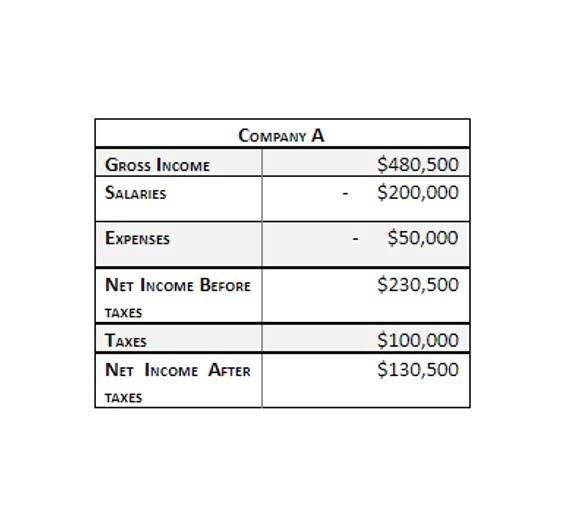
It’s also important to regularly review statements to catch any errors or unauthorized transactions quickly. Remember, knowledge is power, especially when it comes to managing your money. Understanding debit memos is crucial for both individuals and businesses to manage their finances effectively. By keeping track of these deductions, you can avoid surprises and maintain a healthy account balance.
Types of Debit Memos?
- Just make sure you’ve turned on account alerts to track deposits, withdrawals, and other important account changes.
- This amount is sometimes accompanied with a negative symbol to show that it lowered the balance.
- This adjustment is meant to address billing errors by formally notifying the customer of an increase in their accounts payable.
- For a bank or credit card statement, you will find the date of the credit issued, a description of the credit, and the amount.
- The customer’s account will be credited with the amount of the debit memo right away.
- This is especially crucial in industries like retail, manufacturing, and federal contracting, where precise financial records are important to keep.
Now, this is generally a common mistake to which there are simple solutions. First, Andy can raise a new Invoice by canceling the previous invoice by raising a Credit Note. For example, let’s say you notice a monthly charge for a gym membership that you haven’t used in months.
The Legal and Tax Implications of Debit Memos

It is commonly used to adjust an invoice amount upward due to undercharging initially or to account for additional charges incurred. This increases the buyer’s accounts payable or decreases accounts receivable. The purpose of debit memos for business to business transactions is to rectify a billing error issued by one party to the other. Thus, it is important to understand the pros and cons of the concept and document before using it.
- Whether you’re running a business or managing personal finances, the discipline of reconciliation can provide peace of mind and financial clarity.
- For a bank or credit card statement, you will find the date of the debit charge, a description of the debit, and the amount.
- Debit memos occur both in personal banking — like for a bounced check or insufficient funds fees — but are also common in business-to-business (B2B) transactions.
- You received a debit memo because the seller identified additional charges or corrections needed beyond the original invoice amount.
- A common use case for a credit card memo is tracking a business expense that you may have returned.
- Financial literacy is the key to unlocking a world where bank statements and debit memos are not just monthly occurrences but tools for achieving your financial goals.
Guide to Debit Memorandums
For businesses, these memos are routine, reflecting transactional adjustments with vendors or clients. From an accounting standpoint, debit memos are vital for maintaining the integrity of financial records. They ensure that the cash balance in the ledger reflects the true amount of funds available, which is essential for accurate financial reporting and analysis. In the context debit memo on bank statement of bank reconciliation, debit memos are adjustments that must be accounted for to reconcile the bank statement with the company’s cash account records.

What is a Debit Memorandum?
- By harnessing the insights bank statements provide, one can navigate the financial seas with confidence and precision.
- For a business, it’s a critical document that informs cash flow analysis and financial planning.
- A debit memo, also known as a debit note or debit memorandum, is a formal notice that there is an upcoming adjustment to your checking account balance.
- Regular account reconciliation is not just about detecting errors; it’s a proactive step in managing your finances effectively.
- It is commonly used in the accounts receivable process to correct billing errors, apply discounts, or adjust for returns or overpayments.
We get a Airbnb Accounting and Bookkeeping clear idea about the entire process of debit memo request from the above example. We note how the change in the amount is settled through raising the document so that the alteration is recorded correctly for future reference. For example, imagine you have a receipt for a purchase of $50, but your bank statement shows a charge of $70. Upon reconciling, you realize that the additional $20 was a bank fee that you were unaware of.

Need a banking data sync option?
They are deductions from your account, signifying that the bank has removed a certain amount of money. These can occur for various reasons, such as bank fees, loan payments, or adjustments for transactions that were processed incorrectly. From the perspective of an individual, a debit memo might be an unexpected decrease in their account balance, prompting a review of recent transactions.
Debit memos play a crucial role in the financial transactions of businesses, acting as a tool for adjusting accounts and ensuring accuracy in bank reconciliations. They are typically issued by a bank against a depositor’s account for a variety of reasons, such as a bank service charge or a cheque that was deposited but returned due to insufficient funds. In essence, a debit memo reduces the balance of the depositor’s account, serving as the opposite of a credit memo which would increase the account balance. Debit memos are a critical component of the financial reconciliation process, serving as a tool for correcting discrepancies between transactions recorded by two parties. In essence, a debit memo is a document issued by a bank against a depositor’s account, or by a supplier in response to a returned item or an underpayment.
A debit memo increases the amount a buyer owes for additional charges or corrections. This can be significant for working capital management, enabling the business to meet its short-term financial obligations more effectively or to invest in other operational areas. From the perspective of a consumer, financial literacy means being able to read a bank statement bookkeeping and understand how each transaction affects your financial health. It’s recognizing that a debit memo is not just a deduction from your account, but a reflection of spending habits, fees, or charges that need to be managed. In another scenario, a business might see a debit memo for $500 labeled “Loan Payment,” reflecting the monthly installment for a business loan they’ve taken out with the bank.
While an invoice starts the payment process for a transaction, a debit note adjusts the payment required, usually increasing it to reflect changes in the transaction or to correct errors. Both are vital for accurate financial accounting, ensuring that the amount billed and paid reflects the actual value of the goods or services. Debit memos play a pivotal role in ensuring the accuracy of financial records and maintaining the integrity of the reconciliation process. They act as a formal record of adjustments needed and help maintain transparency between transactional parties. Understanding their function and impact is essential for anyone involved in the financial aspects of a business.
